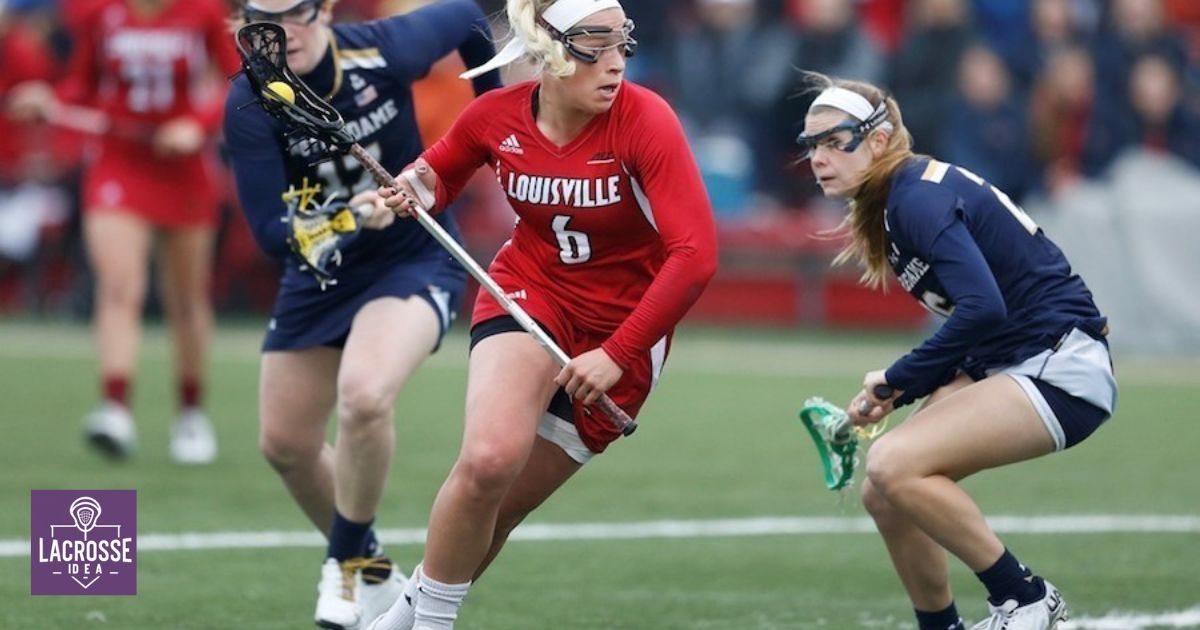Women’s lacrosse is a captivating sport that combines athleticism, strategy, and teamwork. If you are looking to become a part of this exciting community, it is essential to understand the fundamentals of the game. This guide will provide you with the necessary knowledge and skills to play women’s lacrosse effectively.
From mastering basic skills and equipment to learning offensive and defensive strategies, we will cover every aspect of the game. Additionally, we will discuss teamwork, communication, and conditioning tips that will help you excel on the field. Whether you are a beginner or an experienced player, this comprehensive guide will empower you to navigate the world of women’s lacrosse with confidence and proficiency.
Key Takeaways
- Women’s lacrosse requires mastery of stick-handling, passing, and shooting skills, as well as techniques like cradling, catching, and throwing accurately.
- Protective gear such as mouthguard, goggles, and helmet should be worn during play, and a lacrosse stick with a shaft and head with a mesh pocket is used.
- The game involves different field positions with specific responsibilities, including attackers, midfielders, defenders, and goalkeepers, all of which contribute to effective teamwork.
- Offensive strategies focus on set plays, ball movement, quick passing, and individual skills like dodging and shooting accuracy, while defensive strategies utilize man-to-man and zone defense to prevent opponents from scoring. Effective communication and teamwork are essential for success in both offense and defense.
Basic Skills And Equipment
The mastery of fundamental skills and the use of appropriate equipment are essential for successful participation in women’s lacrosse. To excel in this sport, players must develop their stick-handling, passing, and shooting abilities. This involves practicing basic techniques such as cradling the ball, catching and throwing accurately, and shooting with precision. Additionally, players must be adept at ground balls, which require quick reflexes and good hand-eye coordination.
In terms of equipment, women’s lacrosse players must wear protective gear, including a mouthguard, goggles, and a helmet. They also need a lacrosse stick, which consists of a shaft and a head with a mesh pocket for holding the ball. With these skills and equipment in place, players can now move on to understanding the different field positions and responsibilities that make up the game of women’s lacrosse.
Field Positions And Responsibilities
To transition from mastering basic skills and equipment, players must now familiarize themselves with the field positions and corresponding responsibilities in women’s lacrosse. Understanding these positions is crucial for effective teamwork and successful gameplay. Here are the key field positions and their responsibilities:
- Attackers:
- Primary goal is to score goals
- Utilize speed, agility, and stick skills to maneuver around defenders
- Maintain offensive pressure and create scoring opportunities
- Midfielders:
- Play both offense and defense
- Cover the entire field, supporting attackers and defenders
- Control the midfield, transitioning the ball between offense and defense
- Defenders:
- Prevent opponents from scoring goals
- Use defensive tactics to intercept passes and disrupt the opposing team’s plays
- Communicate and work together to protect the goal
- Goalkeeper:
- Guard the goal and block shots
- Direct the defense and communicate with teammates
- Possess quick reflexes and strong hand-eye coordination
Offensive Strategies And Techniques
Effective offensive strategies and techniques are essential for success in women’s lacrosse. In order to create scoring opportunities and outmaneuver the opposition, teams must employ various offensive tactics. One common strategy is the use of set plays, where players execute predetermined movements and passes to create openings in the defense. These set plays can include picks, cuts, and screens to confuse defenders and create space for attacking players.
Effective ball movement and quick passing are crucial in maintaining possession and creating scoring opportunities. This requires players to communicate and work together as a cohesive unit. Moreover, individual skills such as dodging, shooting accuracy, and stick handling are vital for offensive players to penetrate the defense and score goals. By implementing these offensive strategies and techniques, teams can maximize their chances of success on the lacrosse field.
Defensive Strategies And Techniques
Teams in women’s lacrosse utilize a variety of defensive strategies and techniques to safeguard their goal and stifle the opposing team’s offensive efforts. These strategies and techniques are designed to create a strong defensive presence on the field and prevent the opposing team from scoring. Here are some of the defensive strategies and techniques commonly used in women’s lacrosse:
- Man-to-man defense:
- Players are assigned specific opponents to mark and defend closely.
- This strategy allows for tight coverage and disrupts the opposing team’s offensive plays.
- Zone defense:
- Players defend designated areas of the field.
- This strategy focuses on protecting the goal and intercepting passes.
Rules And Penalties
The rules and penalties in women’s lacrosse govern the gameplay and ensure fair and safe competition. By adhering to these rules, players can enjoy the game while minimizing the risk of injury. It is essential for players, coaches, and officials to have a clear understanding of the regulations to maintain fairness and sportsmanship. To help you grasp the key rules and penalties, here is a table that provides a concise overview:
| Rule | Description | Penalty |
|---|---|---|
| Checking | Using the stick to make contact with an opponent’s stick or body | Minor Foul |
| Shooting Space | Defending player obstructs the shooting lane of an opponent | Major Foul |
| Three Seconds | Offensive player remains in the 8-meter arc for more than three seconds | Minor Foul |
| Illegal Draw | Violation of proper technique during the draw | Major Foul |
Understanding these rules and penalties will not only enhance your gameplay but also promote a sense of belonging within the lacrosse community.
Face-Offs And Draw Controls
In women’s lacrosse, face-offs and draw controls play a crucial role in determining possession of the ball at the start of play and after goals. These moments are intense and pivotal, as players fight to gain control and secure their team’s advantage. Picture the field buzzing with anticipation as players line up, sticks poised and eyes locked on the referee’s whistle.
The tension builds as they explode into action, using their skill and strategy to outmaneuver their opponents. With lightning-fast reflexes, they battle for the ball, fighting for every inch of ground. The victorious player emerges from the scrum, triumphantly cradling the ball in her stick, ready to launch her team into action. Now, let’s delve into the next section, where we will explore the shooting and scoring techniques in women’s lacrosse.
Shooting And Scoring Techniques
After gaining possession through face-offs and draw controls, players in women’s lacrosse employ various shooting and scoring techniques to propel the ball into the opposing team’s net. Shooting accurately and with power is crucial in order to score goals and secure victories. One common shooting technique is the overhand shot, where players take aim from above their shoulder, generating speed and accuracy.
Another technique is the sidearm shot, which involves releasing the ball from the side of the body, providing a quick and unexpected release. Players also utilize the underhand shot, which involves a low release and is effective for close-range scoring opportunities. Scoring techniques also involve faking and dodging to deceive defenders and create scoring opportunities. By mastering these techniques, players can contribute to their team’s success and experience a sense of belonging within the lacrosse community.
Goalkeeping Skills And Techniques
Players in women’s lacrosse demonstrate their goalkeeping skills and techniques to protect their team’s net and prevent the opposing team from scoring. Goalkeepers play a crucial role in the game, utilizing their athleticism and agility to make saves and control the flow of the game. Here are some key techniques and skills that goalkeepers employ:
- Positioning:
- Goalkeepers position themselves strategically in front of the net, ready to react to incoming shots.
- They constantly adjust their stance and footwork to maintain the best possible position.
- Communication:
- Goalkeepers effectively communicate with their defenders, directing them to mark opponents and anticipate plays.
- They vocally command the defense, ensuring everyone is in sync and well-organized.
Teamwork And Communication
To ensure seamless coordination on the field, effective teamwork and communication are essential in women’s lacrosse. In this fast-paced and dynamic sport, players must rely on each other to achieve success. Teamwork involves understanding and supporting each other’s strengths and weaknesses, working together towards a common goal, and making quick decisions as a unit. Communication plays a crucial role in relaying information, such as calling out plays, signaling for passes, and providing feedback.
Clear and concise communication helps players anticipate and respond to the ever-changing dynamics of the game. In women’s lacrosse, a sense of belonging is fostered through effective teamwork and communication, as it creates a cohesive and supportive environment where players can trust and rely on each other. Together, they form a strong and unified team that can overcome challenges and achieve victory.
Training And Conditioning Tips
During the off-season, women’s lacrosse players can improve their performance on the field through focused training and conditioning. To enhance their skills and physical abilities, players can follow these tips:
- Strength Training:
- Incorporate exercises like squats, lunges, and deadlifts to build lower body strength.
- Use resistance bands or weights for upper body exercises like push-ups, pull-ups, and shoulder presses.
- Cardiovascular Conditioning:
- Engage in activities such as running, biking, or swimming to improve endurance.
- Incorporate interval training to simulate the intensity of game situations.
Tips For Improving Stick Skills
Improving stick skills is essential for women’s lacrosse players seeking to elevate their performance on the field. Developing proficient stick skills allows players to effectively catch, pass, and shoot the ball, leading to better offensive and defensive capabilities. To improve stick skills, players should focus on practicing the fundamental techniques consistently. This includes working on cradling, which involves maintaining control of the ball while running or dodging opponents. Players should also practice passing accurately and with speed, as well as shooting with precision and power.
Regularly participating in drills that emphasize stick handling and coordination can help players develop better hand-eye coordination and muscle memory. Additionally, seeking guidance from experienced coaches or teammates can provide valuable insights and feedback for improvement. By dedicating time and effort to enhancing stick skills, women’s lacrosse players can enhance their overall performance on the field and contribute to the success of their team.
Strategies For Game Situations
When facing different game situations, women’s lacrosse players can employ effective strategies to maximize their performance on the field. Here are some strategies that can help players navigate various game situations:
- Offensive Strategies:
- Utilize quick passes and cuts to create open shooting opportunities.
- Coordinate with teammates to execute well-planned plays, such as pick-and-rolls or give-and-gos, to confuse the defense and create scoring chances.
- Defensive Strategies:
- Maintain proper positioning to limit the opponent’s passing and shooting options.
- Communicate effectively with teammates to ensure everyone is aware of their defensive responsibilities and can quickly adjust to the opponent’s movements.
FAQ’s
What are the basic rules of women’s lacrosse?
The sport of girls’ lacrosse is non-contact. It is necessary to make legal checks far from the attacker, and a defender’s stick cannot enter the attacker’s “sphere.” It is forbidden for a defender to push an attacker with her stick shaft or to cross-check.
Can you kick the ball in women’s lacrosse?
It is legal to kick the lacrosse ball into the goal in both men’s and women’s lacrosse. A lacrosse shot is when a ball leaves a youth lacrosse stick, but you can also score a goal by kicking a ball.
What is the hardest position to play in women’s lacrosse?
The goalie position in women’s lacrosse is the hardest. It is hardest because it requires a lot of pressure to make saves.
Is girls lacrosse hard?
Girls’ lacrosse requires more skill overall due to less physical contact. It takes skill to make legal checks, defend well, and regain possession from the opposing team. In addition, unlike boys’ lacrosse, girls’ lacrosse has a shooting space rule.
Conclusion
In conclusion, mastering the art of women’s lacrosse requires a combination of skill, strategy, and teamwork. From learning basic skills and understanding field positions to implementing offensive and defensive techniques, players must be dedicated and committed to continuous improvement. By following the rules and penalties, communicating effectively with teammates, and staying physically fit, players can dominate the game. So, get out there, sharpen those stick skills, and conquer the lacrosse field like a true champion.








